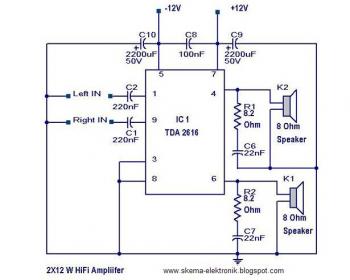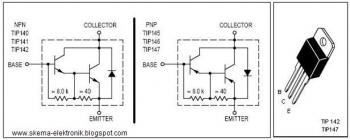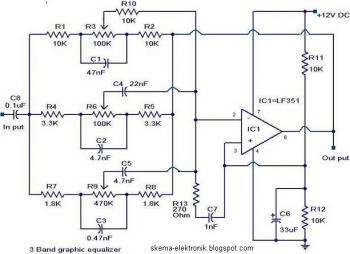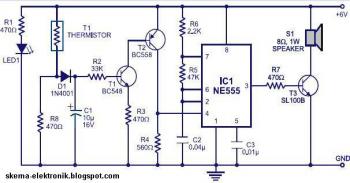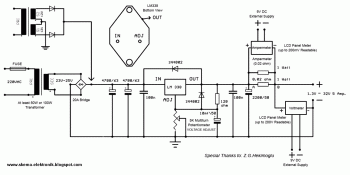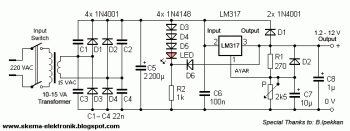Here is the circuit of a 2X12 watt HiFi stereo audio amplifier circuit using IC TDA 2616 from Phillips. A quiet simple and robust circuit using very less components. This makes the circuit ideal for a portable power amplifier. The circuit delivers 12 W power on 8 Ohm speaker for each channel at +/- 12 V dual supply.
The TDA2616 is a stereo power amplifier IC comes in a 9-lead single-in-line (SIL9) plastic power package (SOT131). This IC is specially designed for mains fed amplifier circuits, such as stereo radio, tape and television . The IC has good gain balance of both channels and Hi-fi in accordance with IEC 268 and DIN 45500 standards. Also the IC TDA 2616 has special inbuilt circuit for the suppression of noise signals at the inputs, during switch-on and switch-off. This prevents click sounds during power on and power off.
Notes.
- All capacitors except C10 & C9 are ceramic.
- All capacitors must be rated 50V.
- Use a well regulated and filtered +/- 12 V dual power supply that is able to provide at least 2 A continuous current.
TDA 2616 Pin assignment & layout.
source: circuitstoday.com
